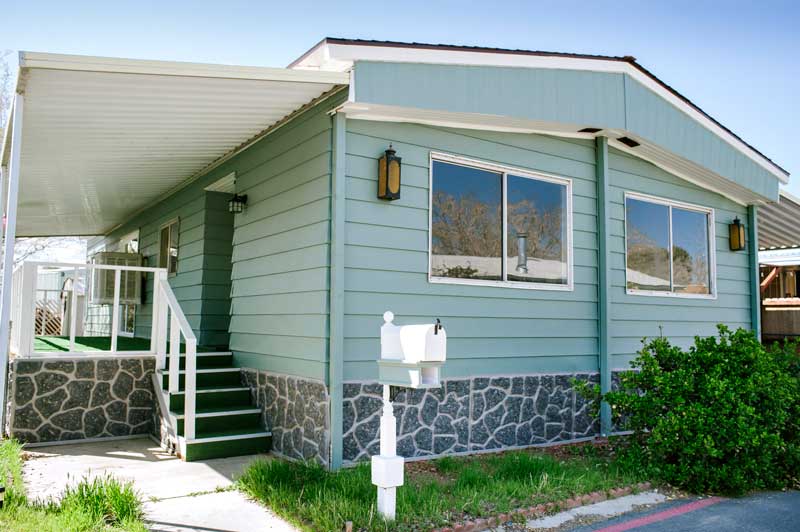Help With Housing for Low-Income Families: A Resource Guide
Housing insecurity is an issue for many Americans. According to the Center on Budget and Policy Priorities, over 60 million non-elderly individuals and families earned a combined household income below the poverty line in June 2020. This staggering figure illustrates that poverty is a serious issue in the United States and a direct cause of housing insecurity.
If you or your family are currently facing financial challenges, then you may be looking for help with housing for low-income families. If you’re like many people in this situation, you may have found this process stressful and expensive and you may be feeling discouraged.

Fortunately, there are low-income housing options available. It’s all about knowing where to look.
In this resource guide, we’ll go through the different types of housing help available to low-income people, information designed to help you on your journey to a safe and affordable place to live.
Help From the Government With Housing for Low-Income Families
The US government can offer assistance when it comes to finding housing for low-income families. This includes public housing and housing vouchers, as well as subsidized housing, which works a bit differently because you rent the home through a private landlord.
Public Housing
One of the best-known options when it comes to low-income housing programs is public housing. This is a type of government assistance available through the U.S. Department of Housing and Urban Development, also known as HUD.
It works like this: HUD provides public housing agencies, or PHAs, with government funds that enable those agencies to make low-income rental properties available. These PHAs are located throughout the country and manage affordable public housing properties in all fifty states.
When you apply for public housing, your rent will be calculated based on a number of factors.
Usually, you’ll pay around 30% of your income after utility and rent deductions toward the rent. HUD will then pay for the rest of what you would usually pay.
Housing available includes both apartments and single-family houses.
PHAs must follow HUD’s guidelines when putting these properties up for rent. However, they are welcome to add their own requirements, procedures, and policies.
Housing Choice Vouchers (Section 8)
If you prefer to find your own place to rent but still need some financial assistance, the Housing Choice voucher program might be a good option for you. With this type of voucher, you can access a wider range of privately owned properties.
Like public housing, the housing choice vouchers are available through HUD and issued through your local PHA.
This is beneficial because you’ll get a discount while still being able to have some choice over the type of property you rent, whether it’s a single-family home, townhouse, or apartment.
When it comes to using this voucher, the housing you choose has to meet specific requirements your local PHA determines.
Additionally, the owner of the property has to agree to renting the property to you through the housing choice vouchers program.
The voucher amount is usually calculated based on what rent prices are like in the area so that enough is covered so it’s affordable for low-income families.
As for what you pay, you’ll usually pay around 30% of your gross adjusted income. However, if the place you move into has a higher rent than usual for your area, the housing choice voucher won’t cover that extra cost.
In this case, you’ll have to pay an amount of over 30% of your income toward your new home.
Subsidized Housing
Another option when it comes to help with housing for low-income families is subsidized housing. When you get housing this way, you’re not renting from the government or a government agency. Instead, you’re renting from a private property owner.
However, you won’t be paying the usual price for housing in your area because this private housing is subsidized.
When looking for this type of home, you’ll look for housing yourself. Then, instead of the government providing you with money or housing, you’ll pay a lower rate to the landlord. Usually, the amount you pay will be based on the subsidy the landlord has received.
This is because the landlord has received a subsidy. After all, they have built a property with the intent of renting it out to people with low income.
The money that they receive from you and the government combined is likely to add up to a total that’s around what most people pay in your area.
Fortunately, you will be paying a discounted price because of the part of the cost subsidy covers.
Rent Help With Housing for Low-Income Families
When it comes to how to get help with housing, there are churches, nonprofits, and charitable organizations that can help you pay your rent. Sometimes, this financial assistance might be for specific costs, such as move-in costs or utility payments.
Usually, this type of rent help is short-term. It can also vary depending on your needs and what organizations in your area have to offer.
For example, a local church might offer assistance to families experiencing homelessness, providing them with enough money for the first month or two of their rent until they can pay their rent on their own.
Requirements can also vary significantly depending on each organization. For these reasons, it’s important to do your research.
To find out about these types of organizations, get in touch with local social services, your library, food bank, or PHA to find out about what organizations can help families in your situation.
You can also dial 2-1-1 to find these types of programs in your area. Additionally, if you go to the website Rent Assistance Programs, you can find out about local programs by simply putting in your ZIP code.
HUD also provides useful information. All you need to do is to your state’s HUD page and go to the “Get Rental Help” section. You can get started here.
Local PHAs
In addition to running some of the government-subsidized programs, your local PHA, or Public Housing Agency, might have housing for low-income families available that is independent of government funding. This can be a good idea to use if you can’t qualify for:
- Public housing
- Housing choice vouchers
The assistance available through your local PHAs can be offered through your state government or through the local area itself. Note that some of these PHAs will only offer emergency or short-term aid.
To get started with your research, go to the Directory of Local Public Housing Agencies. From there, you can contact your PHA to find out what types of funding or assistance they have available.
Veterans Housing Help
Because many veterans struggle with low income and homelessness, there are programs out there to help them. If you, in addition to having a low income, are a veteran (or someone in your family is), you may be able to get some assistance.
One of these forms of assistance is the HUD-VASH, available in a joint effort from Veterans Affairs and HUD.
You can get a choice housing voucher through this program. If you have trouble getting one or can’t qualify with the traditional housing choice voucher program, this is a great alternative option.
Another form of assistance available through this program is the Shallow Subsidy.
If you aren’t homeless but need a small amount of assistance to get back on your feet, this can be the right choice for you if you’re a low-income veteran.
You can receive a subsidy on your rent for a short extended period, up to two years.
Keep in mind that there is an additional requirement for this type of assistance. In addition to being a low-income veteran, you have to be enrolled in the VA’s Supportive Services for Veteran Families, or SSVF, program.
Time to Move In and Move On
Now that you’ve learned some things about help with housing for low-income families, you have enough information to get started on your search to move in and move on. You can get assistance through the government by getting public housing, housing choice vouchers, or subsidized housing.
You can also get rent help from local charities, nonprofits, and churches.
Additionally, your local PHAs can help you out, and there’s assistance if you or someone in your family is a veteran.
Whatever your situation, there are resources available. The journey may be difficult, but you don’t have to walk it alone.
Save Money on Your Wireless Phone Service
If you qualify for federal housing assistance, you may also qualify for Lifeline service. Lifeline is a federal benefit program that makes it possible for low-income consumers to receive access to free or heavily discounted communication services. Click here to find out more and apply for this valuable benefit.



